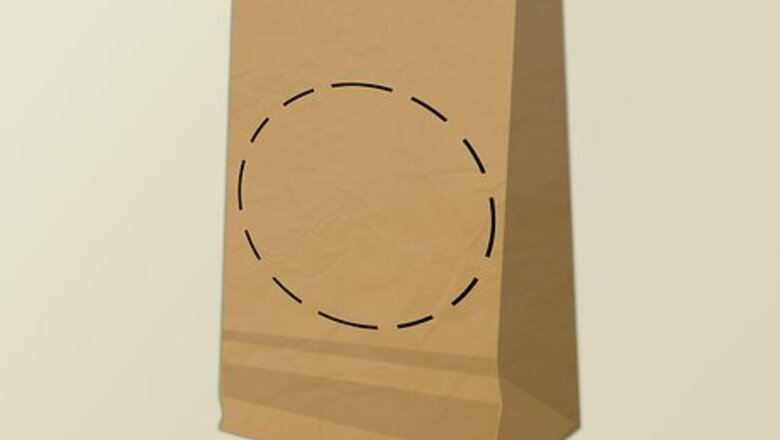
views
Making a Space Helmet Using a Paper Bag
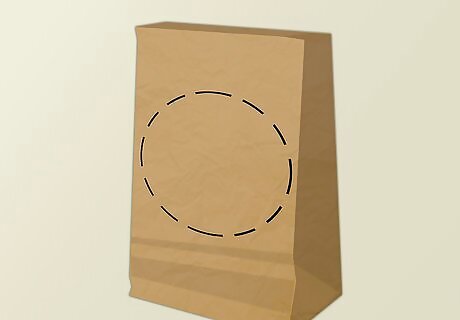
Draw a large circle on a paper grocery bag. The circle should be as large as your face, if not a little larger. The circle should also be placed over the general area of your face. To make sure that it is located in the right spot, place the bag over your head and have a second person trace the circle onto the bag, directly over your face.
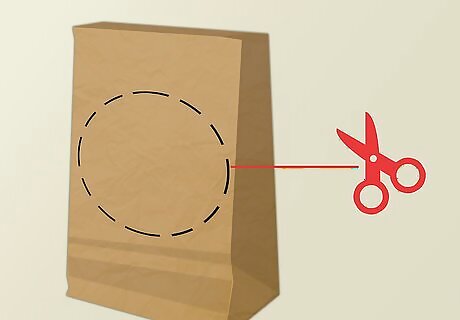
Cut this circle out. Remove the bag from your head and cut out the circle using a pair of scissors. You should also consider cutting a half-circle into the bottom left and right sides of the bag. Doing so is not strictly necessary, but it may help the bag sit on your shoulders more comfortably.Make a Space Helmet Step 2Bullet1.jpg
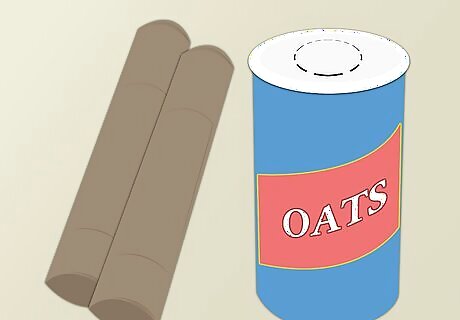
Trace the end of a paper towel tube onto an oatmeal box lid. Place the end of one paper towel tube in the middle of one oatmeal box lid. Trace the shape of the tube onto the lid using a marker. Repeat this step with the second oatmeal box lid, as well. You can leave the lids on or take them off during this step. Note, however, that you will need to temporarily remove the the lids when you cut these circles out.
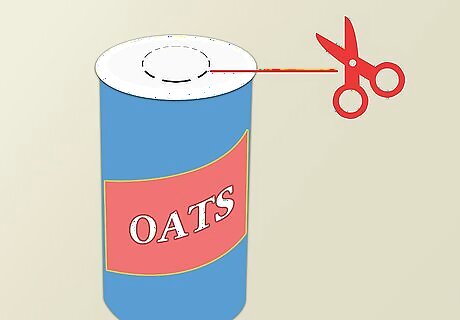
Cut the holes out. Use your scissors to cut the two traced circles out of each lid. Put the lids back on their containers. You might need to use the point of a nail or the sharp tip of your scissors to punch a starting hole into the lid somewhere along the outline of the circle. After creating a starting hole, slide the scissors into this hole and cut around the circle as you usually would.
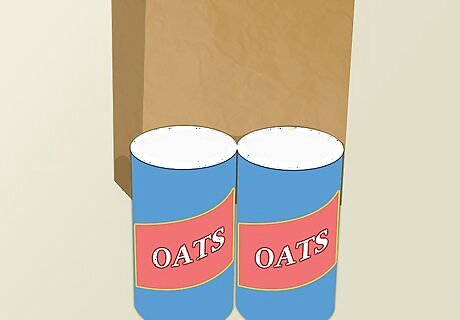
Attach the boxes to your paper bag. Position the oatmeal boxes side by side at the back (uncut) side of your paper bag, near the bottom half. Use tape or staples to secure these boxes to the bag. Make sure that the lidded sides of the oatmeal boxes face up. The bottom of each oatmeal box should extend below the bottom of the paper bag. You can make them extend however far you like, but make sure they are high enough up on the bag so that they can be securely attached.
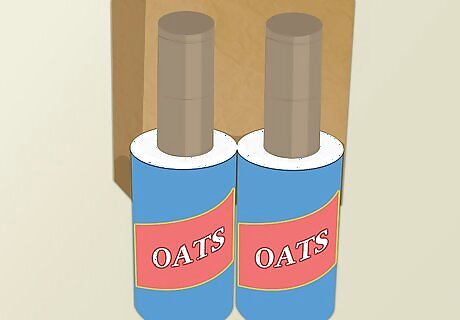
Insert the paper towel tubes. Slide one end of a paper towel tube through the top of one oatmeal box. Tape or staple the top of the tube to the paper bag. Repeat this step with the second paper towel tube and the second oatmeal box. These cardboard tubes should mimic the appearance of oxygen tank hoses, and the oatmeal boxes should mimic the appearance of oxygen tanks.
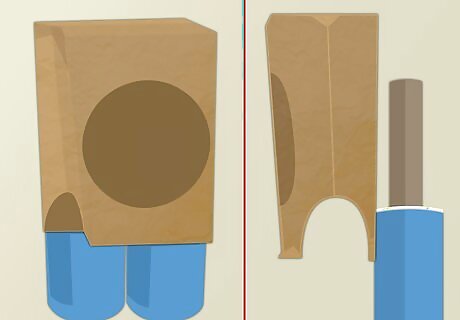
Decorate the helmet as desired. Use markers, crayons, or colored pencils to draw on and color the helmet in whatever way you wish. Also consider decorating the helmet with lightweight embellishments, like stickers or aluminum foil shapes.
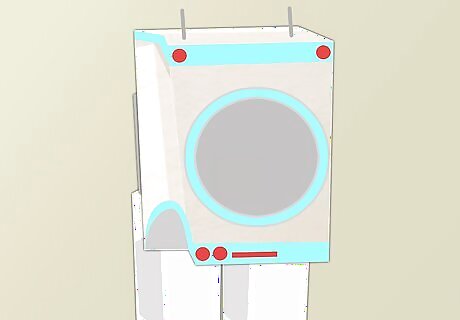
Wear your space helmet. At this point, your space helmet should be ready to wear. Slip the bag onto your head so that the hole is in the front and the oatmeal boxes are in the back.
Making a Space Helmet Using Papier Mâché
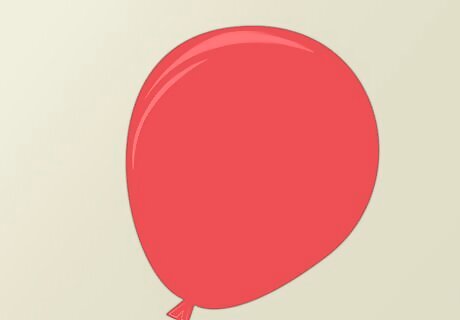
Inflate a balloon. Blow up a standard balloon so that its final size is a little bigger than the size of your head. Tie the end of the balloon into a tight knot.
Tear newspaper into strips. Take five large sheets of newspaper and tear them into 2 to 3 inch (5 to 7.6 cm) wide strips.
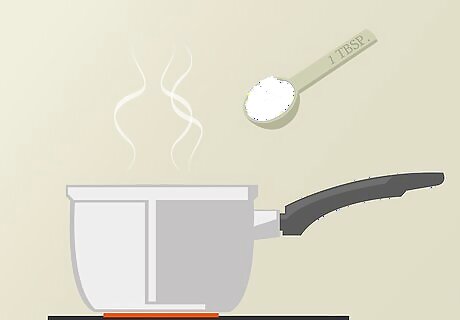
Prepare a paper mâché paste. If you have not done so already, prepare the paper mâché paste. Combine 1 Tbsp (15 ml) of corn flour with 1 qt (1 L) of boiling water, and stir until a paste forms.
Cover an area of the floor or table. Before you begin placing the newspaper in the paste, and onto the balloon, you should create a space where you can work. Paper mâché can get messy, so simply lay down a plastic table cloth or some old newspaper on the floor or on the table, so that any excess will drip onto the plastic or paper instead of on the table or carpet.
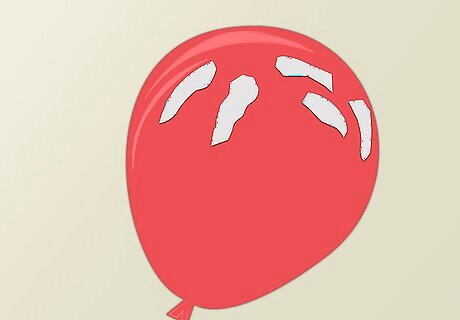
Adhere the newspaper strips to the balloon. Dip one strip of newspaper at a time into the paper mache paste and then lay it flat across the surface of the balloon. Repeat with your other strips, laying them onto the balloon both vertically and horizontally until it is completely covered in newspaper. When done, the balloon should be covered by roughly five coats of newspaper.Make a Space Helmet Step 11Bullet1.jpg Cover the entire balloon except for a small patch near the knotted end. You will need this space to remain open so that you can get the balloon out of the structure later.
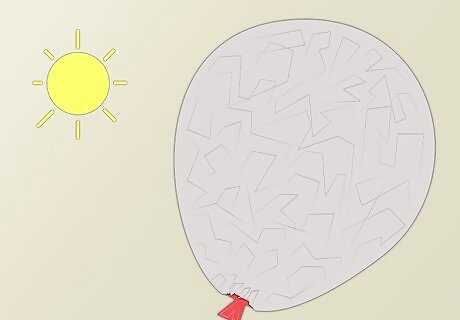
Let dry. Set the paper mache structure aside in a dry, draft free area. Allow it to dry undisturbed for about 24 hours, or until the surface is still and completely dry to the touch. The paste needs to be completely dry before you continue past this step. Your climate will change the rate at which the paste dries. If you live in dry conditions, the paste will dry quicker. If you live in notably humid conditions, the paste might need more than 24 hours to dry.
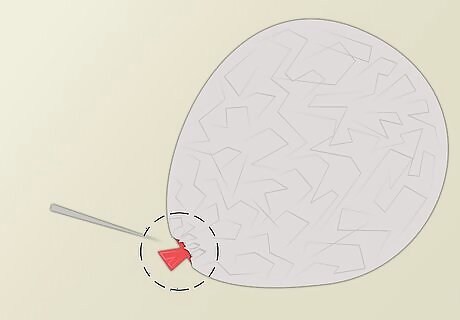
Remove the balloon. Use a pin to pop the balloon through the gap you left at the base of the paper mâché. After popping the balloon, carefully pull it out through the hole.
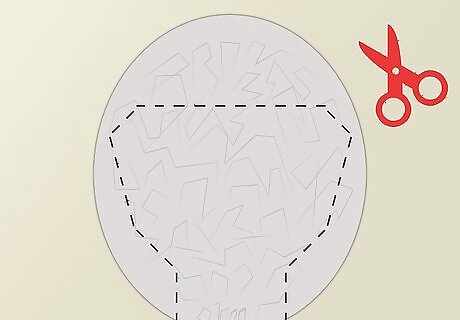
Cut the paper mâché structure into the shape of a helmet. Use scissors to cut off the bottom of the structure, then cut away a circular section for your face to show through. Work from the bottom or open end of the structure. Cut off enough of the bottom for your neck and head to fit through.Make a Space Helmet Step 14Bullet1.jpg Still working from the bottom end, cut a rectangle in the front of the structure. This rectangle should be as wide as the distance between the outer corners of your eyes. It should be about as long as the distance between the bottom of your forehead and your chin.
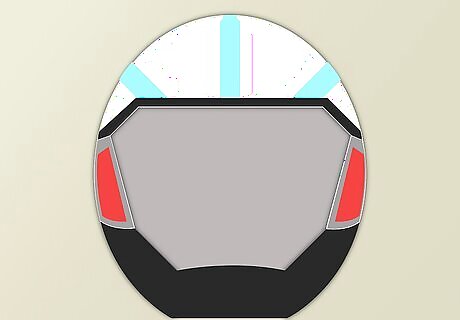
Paint the helmet. Use paint and a paintbrush to decorate the helmet however you desire. You could also decorate the helmet with foil shapes or space-themed stickers. Note that you can also attach antennae. Poke two small holes in the top of your helmet—one near the left side and the other near the right side. Slide a pipe cleaner into each hole, and tape the end of the pipe cleaner into the inside of the helmet to secure it. You can twist a bead to the top of each pipe cleaner to complete the antenna look.
Wear your new space helmet. Once the helmet has been decorated to your liking, it should be ready to wear.
Making a Space Helmet Using a Plastic Bucket
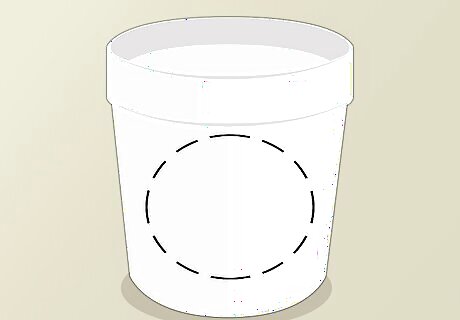
Draw an oval on a large plastic bucket. The oval should be at least 7 inches (17.8 cm) wide by 5 inches (12.7 cm) tall, or large enough for your face to show through from the inside. Sketch it out using a pencil. Make sure that the hole will be able to line up with your face when you put the bucket on. To gauge where the hole needs to be, hold the bucket upside-down in front of you, with the bottom of the bucket even to the top of your head. Quickly mark the point that is even with your eyebrows and the point even with your bottom lip. Draw your oval based on those marks.
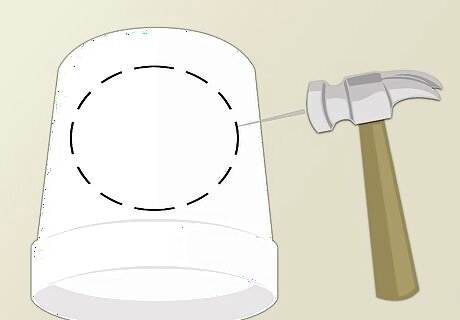
Make a pilot hole along the outline. Position the tip of a nail somewhere along the oval outline you just created. Use a hammer to strike the nail into the bucket just far enough to create a hole. Remove the nail once the hole has been created.
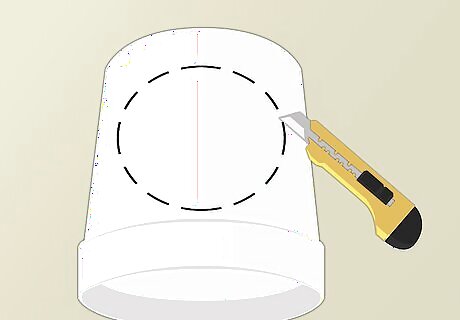
Cut the oval out with wire cutters. Wedge a pair of sharp wire cutters into the pilot hole created by the nail. Carefully cut around the entire oval outline. Remove and discard the plastic oval you cut out.Make a Space Helmet Step 19Bullet1.jpg If the edge seems too jagged and potentially dangerous, cover it with strips of white duct tape.
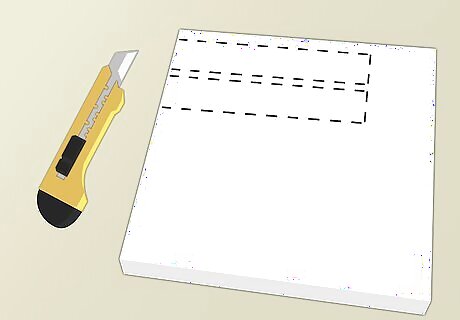
Create two rectangular foam helmet braces. Use a ruler and a pencil to measure out two 2 inch by 9 inch (5.1 cm by 22.9 cm) rectangular pieces from a larger sheet of white foam board. Cut these rectangles out using a craft knife. Use the craft knife to carefully round off the lower corners of both rectangles.
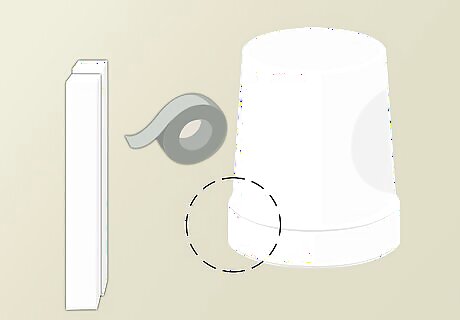
Attach the foam to the bucket. Use white duct tape to adhere the top of each foam rectangle to the inside of the helmet. The two rectangles both be positioned toward the back of the helmet. When you slip the helmet on, these rectangles should slide just behind your shoulders and onto your upper back. Their purpose is to serve as braces that can help keep the helmet straight on your head.
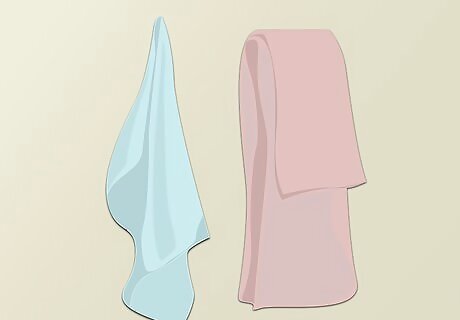
Wrap a dish towel around your head. Take a standard dish towel and roll it up crosswise (widthwise). Wrap this cloth around your forehead, creating a ring, and tape the ends of the ring together with duct tape. The ring should be loose enough to slide on and off your head without difficulty.Make a Space Helmet Step 22Bullet1.jpg
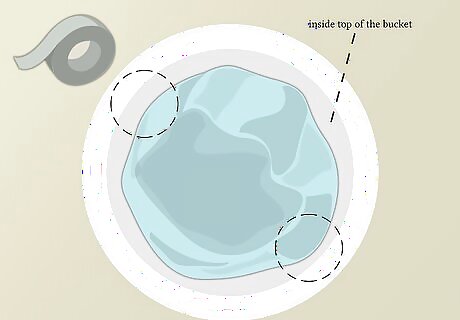
Attach this towel to the inside of the helmet. Use more duct tape to attach the towel ring to the inside top of the bucket. The center of the ring should match up with the center of the bucket.
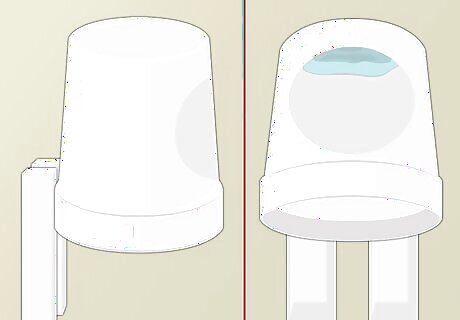
Wear the space helmet. Slide the helmet bucket onto your head with the opening in front of your face. The towel ring should rest on your head, and the foam braces should land behind your shoulders. If everything feels right and the helmet feels stable, it's ready to wear.
Making a Clear Plastic Space Helmet
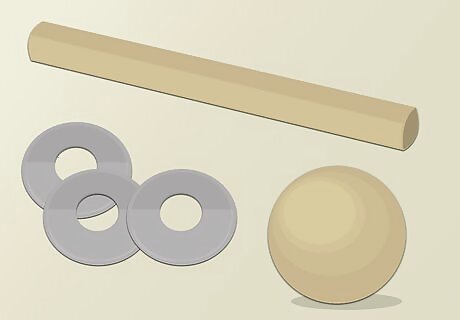
Build your antenna. The antenna consists of a short wooden dowel, three metal washers, and a single wooden ball. Use hot glue to attach the wooden ball to the top of the dowel. Slide the three washers onto the dowel from the bottom, positioning them so that they start 2 inches (5 cm) below the wooden ball and end in the middle of the dowel. The wooden dowel should be about 1/2 inch (1.25 cm) in diameter. Trim the dowel so that it is about 8 inches (20.3 cm) longMake a Space Helmet Step 25Bullet1.jpg The center gap of your washers should also be about 1/2 inch (1.25 cm) in diameter. The washers need to have a snug fit on the dowel. If necessary, however, you can hold them in place on the dowel by applying a small dot of glue to the underside of each washer.Make a Space Helmet Step 25Bullet2.jpg The diameter of the wooden ball should be about 3/4 to 1 inch (1.9 to 2.5 cm).Make a Space Helmet Step 25Bullet3.jpg
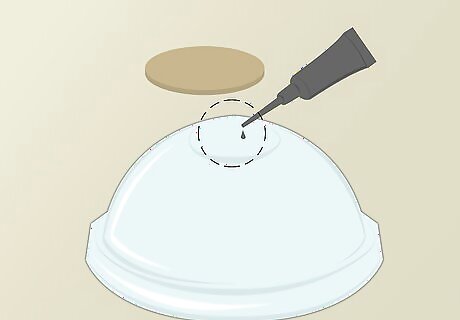
Construct the antenna base. Use the dome-shaped plastic lid from a milkshake or other frozen drink. Find a small wooden circle that is large enough to fit over the top opening of the lid. Apply a ring of hot glue to the top opening of the lid, then press the wooden circle on top of that glue.
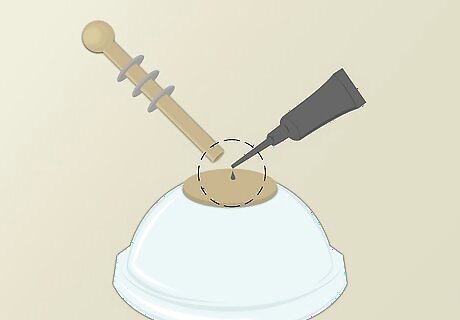
Attach the antenna. Once the antenna and its base are both dry, apply hot glue to the bottom of the antenna rod. Stick this glue spot in the direct center of the wooden circle on top of your base. Let the entire structure dry completely before moving onto the next step.Make a Space Helmet Step 27Bullet1.jpg
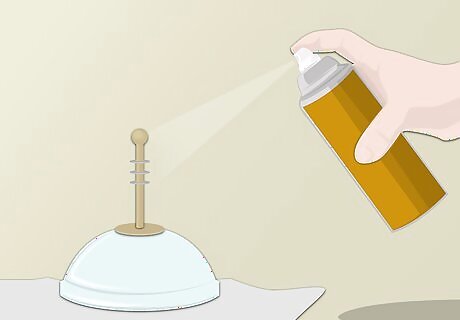
Spray paint the entire antenna structure. Find gold or copper metallic spray paint. Coat the outside of the antenna structure, including both the base and the antenna itself. You should spray paint the structure in a well-ventilated area. It's also a good idea to spread out plastic sheeting or newspaper below the structure to prevent spray paint from staining your work surface.Make a Space Helmet Step 28Bullet1.jpg You do not need to paint the inside of the base. Let the paint dry completely. This could take 12 to 24 hours, depending on the paint you use and the climate you are working in.
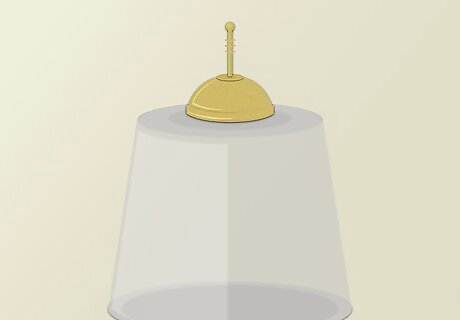
Attach the antenna structure to a large plastic container. Find a clear plastic container large enough to safely put over your head. Turn the container upside-down. Center the bottom of the antenna base over the center of the container and glue it in place. A recycled container that once contained cheese puffs or cheese balls is usually a good choice. Regardless of the container type, however, you need to make sure that your head can fit inside and that the opening is very large. If the opening is too small, the helmet might get stuck on your head or may restrict your air too severely.
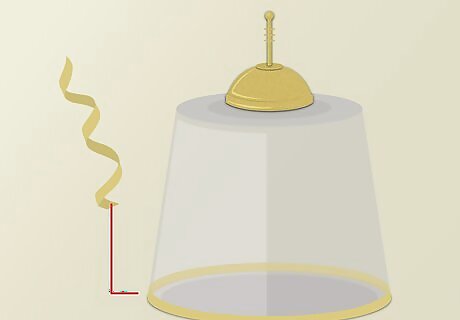
Wrap gold ribbon around the bottom. Cut a length of metallic gold ribbon large enough to wrap around the container. Use a thin line of hot glue to adhere the ribbon to the container. Place the ribbon 1 inch (2.5 cm) or less from the container's opening.

Trim a piece of tubing down to size. Measure out a piece of flex tubing that is long enough to fit around the mouth of the container. Use sharp scissors or a knife to cut the tubing to this size. Use black flex tubing with a diameter of 1 inch (2.5 cm) or so.
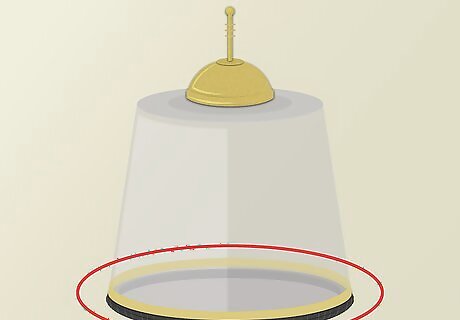
Attach the tubing. Apply a generous line of hot glue around the mouth of the container. Press the tubing into this glue, winding the tubing around the mouth until the two ends meet. Trim off any excess tubing.
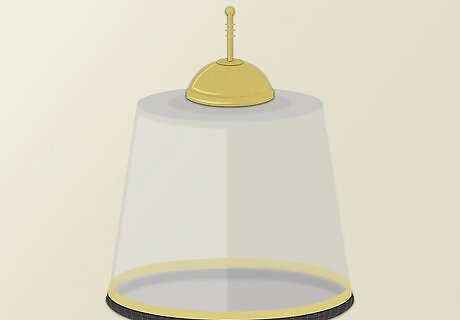
Wear your new space helmet. Once everything dries, the helmet should be ready to wear.




















Comments
0 comment